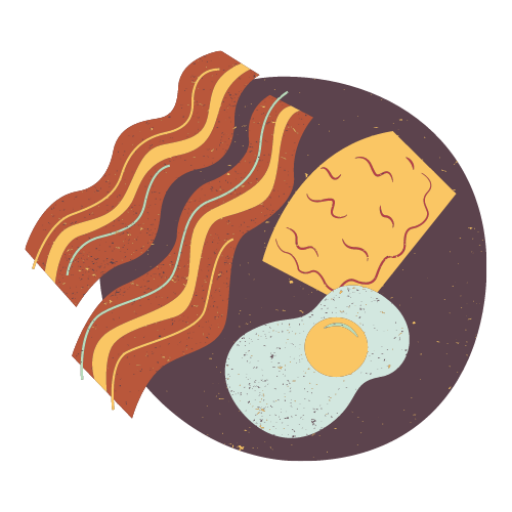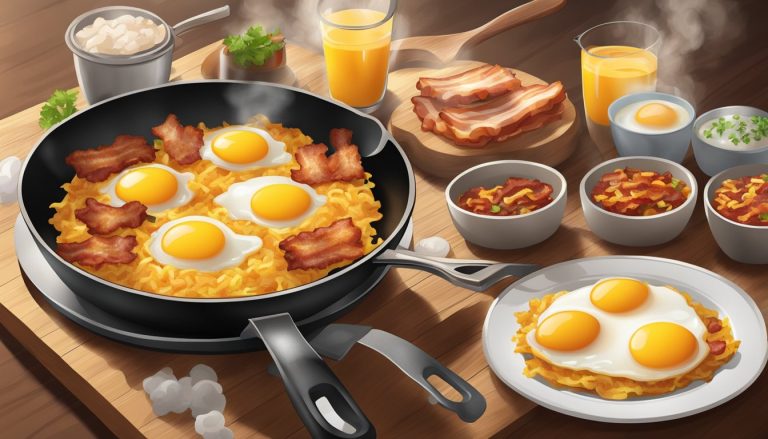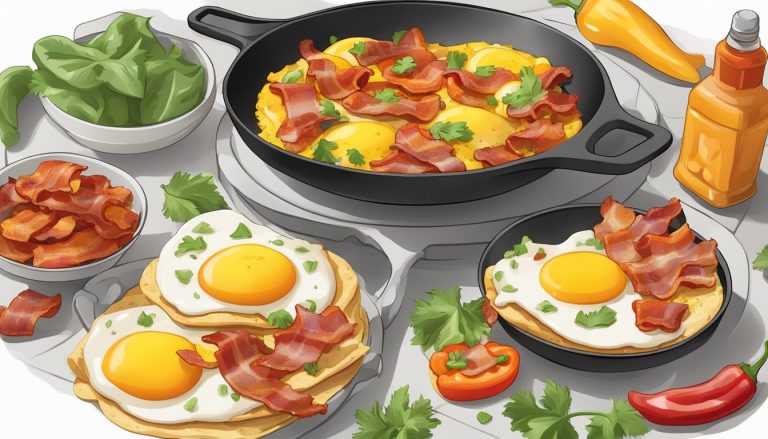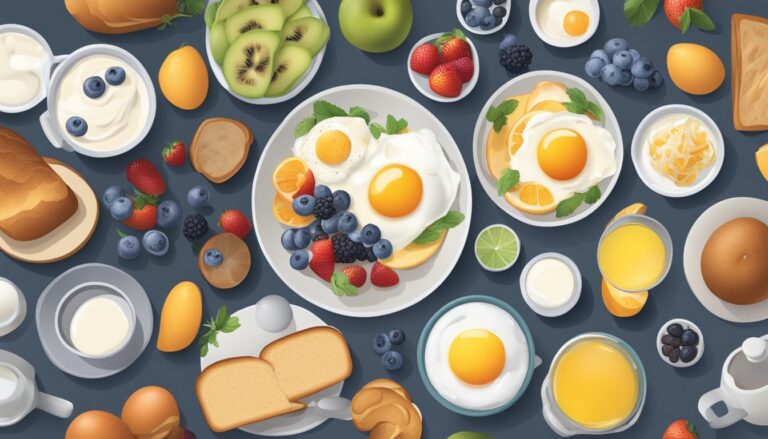The Philips Pasta Maker revolutionizes breakfast by transforming ordinary ingredients into fresh, homemade pasta in minutes. This versatile kitchen gadget opens up a world of possibilities for morning meals, allowing home cooks to create unique and delicious dishes with ease.
Fresh pasta for breakfast offers a nutritious and satisfying start to the day, providing complex carbohydrates and endless flavor combinations. The Philips Pasta Maker simplifies the process, making it possible to enjoy restaurant-quality pasta dishes without leaving the house. From whole wheat spaghetti with poached eggs to spinach fettuccine with smoked salmon, the options are limitless.
Exploring new breakfast recipes with the Philips Pasta Maker can elevate the culinary experience of any home cook. The ability to customize pasta shapes and incorporate various ingredients directly into the dough allows for creative and personalized morning meals that cater to individual tastes and dietary preferences.
Understanding Your Philips Pasta Maker

The Philips Pasta Maker simplifies homemade pasta creation with its automated features and versatile capabilities. This innovative kitchen appliance offers convenience and quality for pasta enthusiasts.
Features of the Philips Avance
The Philips Avance pasta maker boasts a powerful mixing and kneading system. It efficiently combines ingredients to create smooth, consistent dough. The machine includes multiple shaping discs for various pasta types.
Built-in weighing scales ensure precise measurements. This feature helps achieve the perfect flour-to-liquid ratio every time. The automatic extrusion process forms pasta quickly and uniformly.
A clear lid allows users to monitor the mixing process. The pasta maker’s compact design saves counter space while delivering professional results.
Setting Up for Success
Proper setup is crucial for optimal performance. Begin by placing the machine on a stable, flat surface. Ensure all components are clean and dry before assembly.
Measure ingredients accurately using the provided scales or a separate kitchen scale. For breakfast pasta, combine 200 grams of semolina and 50 grams of white flour.
Add liquids slowly through the lid opening while the machine is running. This method promotes even distribution and proper dough consistency.
Select the appropriate shaping disc for your desired pasta type. Secure it firmly in place before starting the extrusion process.
Cleaning and Maintenance
Regular cleaning extends the lifespan of the Philips Pasta Maker. Disassemble the machine after each use, separating removable parts.
Wash non-electrical components with warm, soapy water. Use the provided cleaning tools to remove dough residue from shaping discs and the mixing chamber.
Allow all parts to air dry completely before reassembly. This practice prevents moisture buildup and potential mold growth.
Wipe the exterior with a damp cloth. Avoid submerging the main unit in water. Store the machine in a cool, dry place when not in use.
Periodically check for wear on shaping discs and replace as needed. This ensures consistent pasta quality over time.
Ingredients and Preparations

Creating delicious breakfast pasta dishes starts with choosing quality ingredients and proper preparation techniques. The right combination of flours, liquids, and seasonings forms the foundation for flavorful fresh pasta.
Choosing the Right Flour
Flour selection impacts pasta texture and flavor. All-purpose flour works well for most recipes, producing tender noodles. Semolina flour creates a heartier, more robust pasta with a slightly coarse texture. For gluten-free options, rice or almond flour can be used.
A 50/50 blend of all-purpose and semolina flour offers a good balance. This combination provides structure while maintaining a delicate texture. Experiment with ratios to find your preferred consistency.
Sifting flour before measuring ensures accuracy. Use the scoop and level method for precise measurements. Properly measured flour prevents dough from becoming too dry or sticky.
The Role of Eggs and Water
Eggs add richness and help bind the dough. They also contribute to pasta’s golden color. Use fresh, room-temperature eggs for best results. For egg-free pasta, replace eggs with water or vegetable purees.
Water hydrates the flour, creating a cohesive dough. Add water gradually to avoid over-hydrating. The Philips pasta maker typically requires less liquid than traditional methods.
Aim for a crumbly texture when mixing ingredients. The dough should hold together when squeezed but not feel sticky. Adjust water or flour as needed to achieve the right consistency.
Seasonings and Fat
Enhance pasta flavor with herbs, spices, or vegetable powders. Add these directly to the dry ingredients before mixing. Popular additions include garlic powder, dried basil, or ground black pepper.
A small amount of olive oil or melted butter can improve texture and prevent noodles from sticking. Add 1-2 teaspoons per cup of flour used.
For sweet breakfast pastas, incorporate cinnamon, vanilla, or cocoa powder. These pair well with fruit-based sauces or sweet toppings. Experiment with different combinations to create unique breakfast flavors.
Basic Pasta Dough Recipe

Creating pasta dough for your Philips Pasta Maker is simple and quick. The foundation of homemade pasta lies in a few key ingredients: flour, eggs, and salt.
For optimal results, use a combination of 200 grams of semolina and 50 grams of all-purpose flour. This blend provides the ideal texture for breakfast pasta dishes.
To prepare the dough:
- Mix the flours in a bowl
- Create a well in the center
- Add 2 eggs and a pinch of salt
- Gradually incorporate the flour into the eggs
The preparation time for this basic pasta dough is approximately 5-10 minutes.
Once mixed, transfer the dough to your Philips Pasta Maker. Select program 1 and press start. The machine will extrude the pasta in your chosen shape within minutes.
For gluten-free options, substitute regular flour with gluten-free alternatives. Whisk the egg and water separately before adding to the machine.
This versatile dough serves as the base for various breakfast pasta recipes. Experiment with different shapes and flavors to create unique morning meals.
Creating Different Pasta Shapes
The Philips pasta maker offers versatility in producing various pasta shapes for your breakfast creations. With its extrusion and shaping capabilities, you can craft pasta to suit different recipes and textures.
Extruding Spaghetti and Fettuccine
The pasta maker excels at extruding long noodles like spaghetti and fettuccine. For spaghetti, use the disc with small, round holes. Feed the dough through the machine and cut to desired length.
Fettuccine requires the flat, ribbon-like disc. The wider noodles work well for cream-based breakfast sauces. Extrude and cut fettuccine slightly shorter than spaghetti for easier eating.
Both shapes cook quickly, making them ideal for fast morning meals. Experiment with whole grain or vegetable-infused doughs for added nutrition and color.
Forming Penne and Other Novelty Shapes
Penne and other short pasta shapes add variety to breakfast bowls. The penne disc creates small tubes perfect for trapping sauce and mix-ins.
For novelty shapes, try discs for shells, spirals, or bow ties. These fun forms appeal to kids and adults alike. Short shapes work well in pasta salads or as a base for breakfast scrambles.
Adjust dough consistency as needed for clean extrusion. Slightly drier dough often works best for defined shapes. Cut pasta to uniform lengths for even cooking.
Rolling Pasta Sheets for Baked Lasagna
The Philips pasta maker also produces flat sheets for lasagna. Use the widest disc setting to create broad noodles. Cut sheets to fit your baking dish.
Layer pasta sheets with breakfast-friendly fillings like eggs, cheese, and spinach. Par-cook sheets before assembling to ensure proper texture. Bake until golden and bubbly.
For a twist, roll thin sheets and fill with sweet ingredients for breakfast pastries. Cut and shape as desired before baking.
10 Philips Pasta Maker Recipes
The Philips Pasta Maker opens up a world of culinary possibilities for fresh, homemade pasta. These recipes showcase the versatility of this appliance, from classic Italian dishes to Asian-inspired noodles.
Classic Spaghetti Carbonara
Mix 200g semolina flour and 50g all-purpose flour in the Philips Pasta Maker. Add 2 eggs and water as needed. Extrude the spaghetti.
In a pan, cook diced pancetta until crispy. Whisk 2 eggs, 1 egg yolk, and grated Pecorino cheese in a bowl.
Cook the fresh spaghetti for 2-3 minutes. Drain and add to the pancetta. Remove from heat and quickly stir in the egg mixture. The residual heat will cook the eggs, creating a creamy sauce.
Season with black pepper and extra Pecorino. Serve immediately.
Fresh Fettuccine Alfredo
For the pasta, use 250g all-purpose flour and 2 eggs in the Philips Pasta Maker. Add water as needed and extrude fettuccine.
Melt 1/2 cup butter in a pan. Add 1 cup heavy cream and simmer for 5 minutes. Stir in 1 cup grated Parmesan cheese until melted.
Cook the fresh fettuccine for 2-3 minutes. Drain and add to the sauce, tossing to coat. Add salt and pepper to taste.
Garnish with extra Parmesan and chopped parsley. This rich, creamy dish is perfect for a special breakfast.
Homemade Penne Arrabbiata
Use 250g semolina flour and water in the Philips Pasta Maker to create penne. For the sauce, sauté minced garlic and red chili flakes in olive oil.
Add canned crushed tomatoes and simmer for 15 minutes. Season with salt and oregano.
Cook the fresh penne for 3-4 minutes. Toss with the spicy tomato sauce. Top with grated Parmesan and fresh basil.
This fiery dish is a great way to start the day with a kick.
Spinach and Ricotta Lasagna
For spinach pasta, blend 100g fresh spinach with 2 eggs. Use this mixture with 250g flour in the Philips Pasta Maker to create lasagna sheets.
Mix ricotta, grated Parmesan, and chopped spinach for the filling. Layer pasta sheets with the filling and tomato sauce.
Bake at 375°F (190°C) for 25 minutes. Let it rest before serving. This protein-packed lasagna is ideal for a hearty breakfast.
Herbed Pappardelle
Add dried herbs like basil, oregano, and thyme to 250g flour in the Philips Pasta Maker. Use 2 eggs and water as needed. Extrude pappardelle.
Cook the pasta for 2-3 minutes. Toss with olive oil, garlic, and fresh herbs. Add grated Parmesan and lemon zest.
This light, aromatic pasta is perfect for a fresh start to the day.
Seafood Linguine
Create linguine using 250g semolina flour and water in the Philips Pasta Maker. For the sauce, sauté garlic and red pepper flakes in olive oil.
Add white wine and simmer. Toss in shrimp, mussels, and calamari. Cook until the seafood is done.
Cook the fresh linguine for 2-3 minutes. Combine with the seafood sauce. Garnish with chopped parsley and lemon wedges.
This protein-rich seafood pasta makes for an indulgent breakfast.
Tomato Basil Penne
Use 250g semolina flour and water in the Philips Pasta Maker to create penne. For the sauce, blend fresh tomatoes, basil, garlic, and olive oil.
Cook the penne for 3-4 minutes. Toss with the no-cook tomato sauce. Add torn fresh mozzarella and extra basil leaves.
This light, fresh pasta dish is perfect for a quick and easy breakfast.
Butternut Squash Ravioli
Blend roasted butternut squash with ricotta, nutmeg, and sage. Use 250g flour and 2 eggs in the Philips Pasta Maker to create pasta sheets.
Fill and shape the ravioli. Cook for 2-3 minutes. Serve with browned butter and sage leaves.
Sprinkle with grated Parmesan. This sweet and savory pasta is a comforting breakfast option.
Chicken and Pesto Farfalle
Create farfalle using 250g semolina flour and water in the Philips Pasta Maker. Blend basil, pine nuts, garlic, Parmesan, and olive oil for the pesto.
Cook diced chicken until golden. Prepare the farfalle for 2-3 minutes. Toss with pesto and chicken.
Add halved cherry tomatoes and extra Parmesan. This protein-packed pasta is great for a satisfying breakfast.
Asian-style Ramen Noodles
Use 250g all-purpose flour and 1 tsp baking soda in the Philips Pasta Maker. Add water as needed to create ramen noodles.
Prepare a broth with chicken stock, soy sauce, and miso paste. Cook sliced pork, mushrooms, and bok choy in the broth.
Cook the fresh ramen for 1-2 minutes. Add to the broth with toppings. Finish with a soft-boiled egg and nori.
This warming noodle soup offers a comforting start to the day.
Cooking and Storing Fresh Pasta
Fresh pasta made with a Philips Pasta Maker requires special care in cooking and storage to maintain its quality and texture. Proper techniques ensure optimal results for your homemade pasta dishes.
The Perfect Boiling Water
Use a large pot filled with 4-6 quarts of water per pound of pasta. Add 1-2 tablespoons of salt to enhance flavor. Bring water to a rolling boil before adding pasta.
Stir gently after adding pasta to prevent sticking. Keep the water at a steady boil throughout cooking. Avoid adding oil to the water, as it can prevent sauce from adhering to the pasta later.
For best results, use filtered water if possible. Hard water can affect pasta texture and flavor.
Determining Cooking Time
Fresh pasta cooks much faster than dried pasta, typically in 2-4 minutes. Start testing for doneness after 2 minutes.
Taste test for al dente texture – pasta should be firm to the bite but not hard in the center. Cooking times vary based on pasta shape and thickness.
Thinner pasta like angel hair cooks in about 2 minutes, while thicker shapes like fettuccine may take 3-4 minutes.
Drain pasta immediately when done. Avoid rinsing unless using in a cold pasta salad.
Storage Guidelines
Fresh pasta can be stored in the refrigerator for up to 2 days. Place in an airtight container or wrap tightly in plastic wrap.
For longer storage, freeze fresh pasta for up to 1 month. Lay pasta flat on a baking sheet, freeze until firm, then transfer to freezer bags.
When ready to use frozen pasta, do not thaw. Cook directly from frozen, adding 1-2 minutes to the cooking time.
Dried homemade pasta can be stored at room temperature in an airtight container for up to 1 month.
Nutritional Comparison

Fresh pasta made with a Philips pasta maker offers several nutritional advantages over store-bought varieties. Homemade pasta allows for greater control over ingredients, resulting in potentially healthier options.
Protein content can vary significantly between fresh and store-bought pasta. Fresh pasta made with eggs typically contains more protein than standard dried pasta. A 100g serving of fresh egg pasta provides approximately 12-14g of protein, while the same amount of dried pasta offers 7-9g.
Fiber content depends on the type of flour used. Whole wheat or alternative flours in homemade pasta can boost fiber intake compared to refined white flour pasta. Fresh pasta also tends to have a lower glycemic index, causing a slower rise in blood sugar levels.
| Nutrient (per 100g) | Fresh Pasta | Store-Bought Pasta |
|---|---|---|
| Calories | 270-290 | 350-370 |
| Protein | 12-14g | 7-9g |
| Carbohydrates | 54-56g | 70-75g |
| Fat | 2-3g | 1-2g |
Fresh pasta often contains fewer preservatives and additives than commercial varieties. This can be particularly beneficial for those with sensitivities or preferences for more natural ingredients.
Homemade pasta allows for customization to meet specific dietary needs. Adding vegetables, herbs, or alternative flours can enhance the nutritional profile, providing additional vitamins, minerals, and antioxidants.
Pasta Pairings and Serving Suggestions

Fresh pasta from your Philips Pasta Maker deserves thoughtful pairings to create a memorable breakfast. A classic tomato sauce complements many pasta shapes and adds vibrant flavor.
For a protein boost, consider topping your pasta with a poached egg. The runny yolk creates a rich, creamy sauce when mixed with the noodles.
Grated pecorino cheese adds a salty, tangy element that enhances the pasta’s taste. Sprinkle it generously over your dish just before serving.
Fresh herbs like basil or parsley brighten the flavors and add visual appeal. Chop them finely and scatter over the pasta.
For a heartier breakfast, pair your pasta with crispy bacon or sautéed vegetables. These additions provide texture and depth to the meal.
Consider serving your breakfast pasta with a side of fresh fruit or a small green salad. This balances the dish and adds nutritional variety.
A warm slice of crusty bread makes an excellent accompaniment, perfect for soaking up any remaining sauce on your plate.
Enhancing Your Pasta Making Experience

Elevate your pasta creations with innovative techniques and tools. Experiment with new flavors and utilize Philips Pasta Maker attachments to expand your culinary repertoire.
Experimenting with Flavors
Add herbs, spices, or vegetable purees to your pasta dough for unique flavors. Incorporate finely chopped spinach or sun-dried tomatoes for vibrant colors and tastes.
Try using alternative flours like whole wheat or Bob’s Red Mill gluten-free options for different textures and nutritional profiles. Adjust liquid ratios as needed when using specialty flours.
Mix in grated cheese or ground nuts for savory variations. For sweet pasta, blend in cocoa powder or vanilla extract. Remember to knead the dough thoroughly to distribute added ingredients evenly.
Using Philips Pasta Maker Attachments
Explore various pasta shapes with Philips Pasta Maker attachments. The spaghetti disc creates classic long strands, while the penne attachment produces perfect tubes.
Try the lasagna attachment for wide, flat sheets ideal for layered dishes. The fettuccine disc offers ribbon-like noodles perfect for creamy sauces.
Clean attachments promptly after use to prevent dough buildup. Store discs in the provided case to protect cutting edges. Regularly check attachments for wear and replace as needed to maintain optimal performance.
Experiment with different thicknesses by adjusting the machine settings. Thinner pasta cooks faster and works well in light broths, while thicker noodles hold up in heartier sauces.




